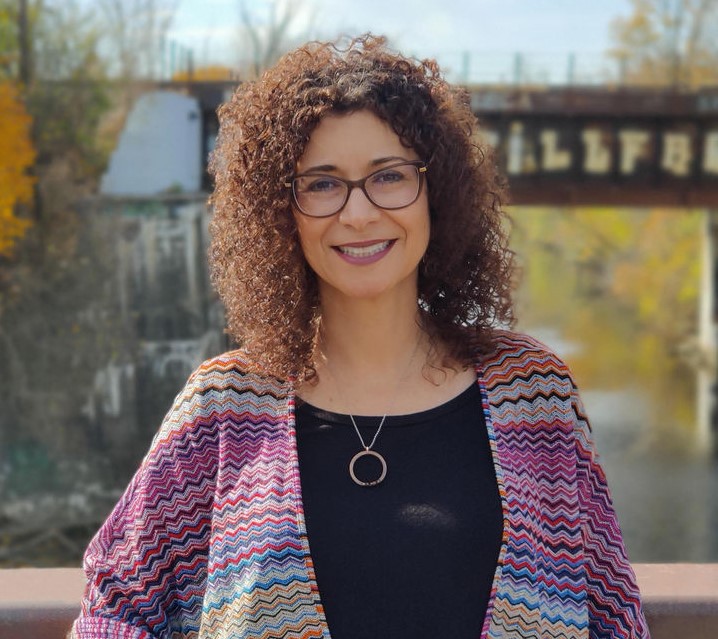SPONSORED CONTENT
By Dr. Jill Kushner Bishop

There’s a big gap between Boston and Beijing.
6,729 miles to be exact.
But when that gap must be bridged for strategic business growth, translation is the most obvious means to the destination. Taking the research show on the global road means thinking about how to get translation done as an additional layer to the project. Translation services need to be incorporated into the process, the timeline and the budget at the beginning of the project and not as an afterthought.
Getting started with translation
As exciting as it is to enter new markets and work with new and different cultures and languages, the primary understanding must be that translation goes far beyond translating exact words. Adding layers of complexity to your research project can be a wild ride at first, but with a broader understanding of what is actually being translated, a more informed plan can be put into place. That plan should include considerations on how effective translation addresses cultural differences, collateral needs and clarity of outcomes.
Preparing for your next global research project?
Download this workbook – inside you’ll find key planning materials for optimal project success.
Translating culture
Great translation is not just a matter of precision, but a mastery of the art of writing – no matter what language. It’s important to understand that words are mere vehicles of meaning and that literal translation is limited and limiting. That understanding is only deepened by the appreciation of other cultures and the recognition of the great variation in human experience and worldviews. While that sounds exciting for vacation purposes, it can feel harder to put into tangible terms for global research.
At every turn, consideration should be made in translation for how the chosen words will be received from within the targeted language audience. A review of cultural appropriateness is essential.
Some examples include:
In Thai, as with many languages, translation of the same words are changed depending on the gender of the speaker or the audience.

In Thailand, as in other parts of the world, a simple “hello” is rarely that simple.
But words aren’t the only things to be translated. Everything in the research project should be reviewed for cultural appropriateness. For example, having an in-country expert review a screener to be sure demographic categories make sense is a great start. That can be as simple as changing the required income brackets to their currency, but different parts of the globe would bracket earnings differently and “top out” at unique points. Where a study in the U.S. might have the final category for income as $200,000+, that would be significantly higher in Dirham for citizens of the UAE and significantly lower in Euros for work conducted in Bulgaria. Likewise, gender diversity and specificity is seen differently around the world. These two issues alone require a more nuanced approach for setting course for a successful research project.
Before a study goes into the field the methodology, it should be reviewed for cultural sensitivity:
- Some cultures have taboo subjects.
While money, sex and religion might be sensitive topics in the U.S., in other countries touching someone’s head, showing someone the soles of your feet, discussing age or discussing certain foods might be viewed as taboo.
- Some cultures have strict guidelines for people of opposite genders, different ages or from different socioeconomic or even ethnic groups interacting socially.
Issues of modesty and respect are often tacitly understood within a society and do not need to be spoken. But from the outside, these unspoken rules are not obvious. Having a female moderator conducting an IDI with a Muslim male may not be culturally appropriate. Mixing age groups within a focus group may also cause an undercurrent of social friction that is not conducive to open dialogue. Unknowingly putting a small focus group together with people who would not normally interact within their societies can cause unwanted friction or greater issues.
- Some cultures perceive individual and collective opinion differently.
From a Western perspective one can easily be blind to the foundational value of the individual. Market research itself is predicated on the supremacy of the opinion of the consumer. But no matter how questions are translated, consumers around the world may be looking through a lens that values collectivism more strongly, and not understanding how this translates can skew research findings.
Incorporating the expertise of a professional translator early on in the project can help avoid these types of missteps that can derail a project or can help prevent unnatural, overly polite or even forced responses that do not provide meaningful insight for business impact.
Translating collateral
For any research project going global, there are many potential items that need to be translated. From screeners to surveys; focus group guides to stimulus materials and instructions, each needs to be translated with the understanding of when and how it will be used. Every piece of collateral appears at a different point in time within the scope of a project. Some of those times are more or less formal. As each piece of collateral is translated, even the style and voice of the copy should come through. Every language has a spectrum of slang to proper speech for different occasions that should be considered.
 The tone of each translation should match the level of formality for each situation.
The tone of each translation should match the level of formality for each situation.
Translating concepts
Allowing research participants to respond, discuss and interact with ideas in their own native language increases the natural flow of thought. Translating screeners, surveys or moderator guides into respondents’ naive languages is key to creating a more relaxed experience. This allows the focus to be on reflection, expression and evaluation that more accurately represents their opinion.
When these thoughts, responses and feelings are captured either in a focus group, IDI or quantitative survey with open-ends, they are expressed in that native language. But too often, open ended responses or verbatims are summarized instead of being uniquely translated when field reports come back. The extra expense to translate specific research findings back into the language of the analyst can significantly deepen nuanced insights and highlight important but unexpected themes that emerged from the study. Cutting corners on this last leg of the journey cuts corners on conveying the concepts that respondents shared in their voice – which are the basis of true insights.
There is an added benefit of having the same professional identify actual words and phrases research participants used repeatedly. Identifying commonly used phrases or noting interestingly used words for a brand, brand experience, product, service or ad can be helpful in providing insight for effective marketing communications strategies or later iterations of research projects. Keeping those key phrases intact in the native language can be an invaluable resource when brands take action on insights gained.
--
The point of research is to bridge the gap between assumption and knowledge.
The same is true if the work is staying in its own native language, or needing to expand beyond linguistic borders. Starting, growing and improving the capacity to work globally can be key for business success. That type of growth requires translation.
The point of translation is to bridge the gap between words and meaning.
As more businesses pursue the benefits of globalization, they will need to form a greater understanding of consumers around the world. The significant work to be done is to use the right words to convey the intended meaning and gather powerful insights.
As your international work volume increases, formalizing processes and following best practices will keep you on the road to success no matter where in the world that destination lies.
About the author:
 Dr. Jill Kushner Bishop is founder and CEO of Multilingual Connections, a global language solutions company that supports international research for market research and design firms, corporate in-house teams, universities and nonprofits. Jill brought her Ph.D. in linguistic anthropology to the corporate world, where she worked as a UX researcher and then oversaw the implementation of language and culture programs for 130 Chipotle Mexican Grill locations. In 2005, she launched Multilingual Connections to help organizations understand, engage and grow their multilingual audience. When she’s not working, she’s spending time with her husband and teen son, renovating houses and trying to make her garden grow.
Dr. Jill Kushner Bishop is founder and CEO of Multilingual Connections, a global language solutions company that supports international research for market research and design firms, corporate in-house teams, universities and nonprofits. Jill brought her Ph.D. in linguistic anthropology to the corporate world, where she worked as a UX researcher and then oversaw the implementation of language and culture programs for 130 Chipotle Mexican Grill locations. In 2005, she launched Multilingual Connections to help organizations understand, engage and grow their multilingual audience. When she’s not working, she’s spending time with her husband and teen son, renovating houses and trying to make her garden grow.

